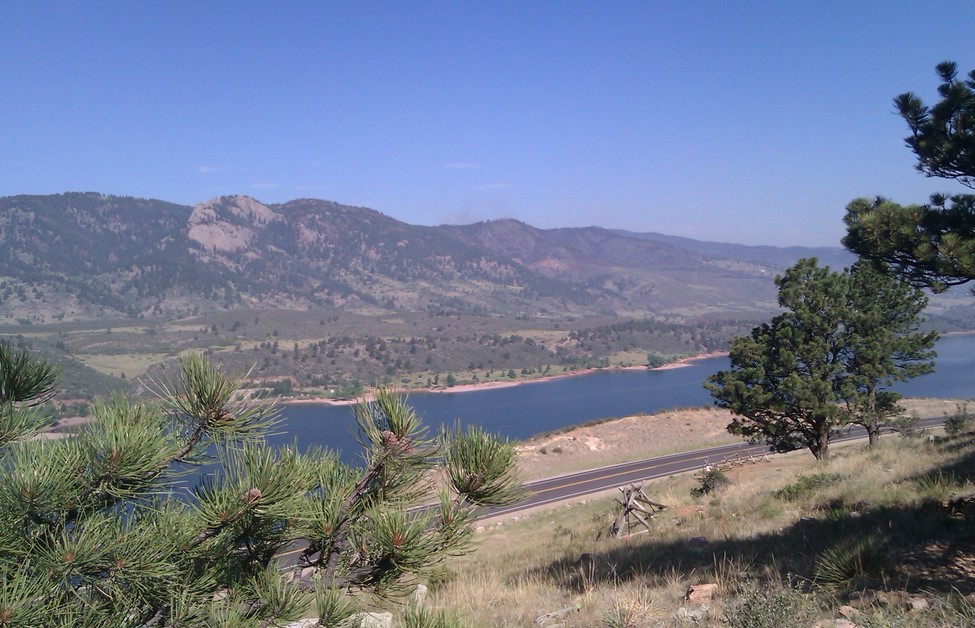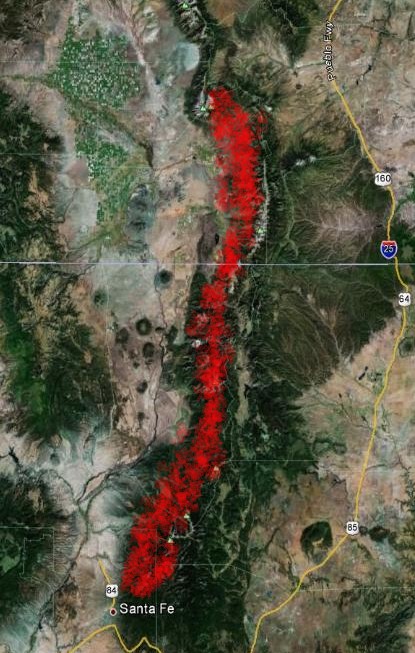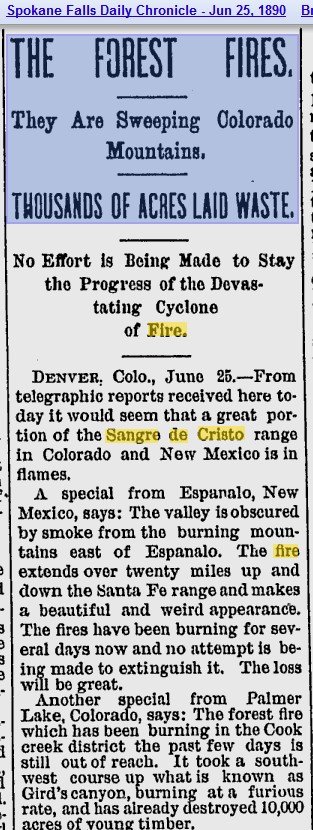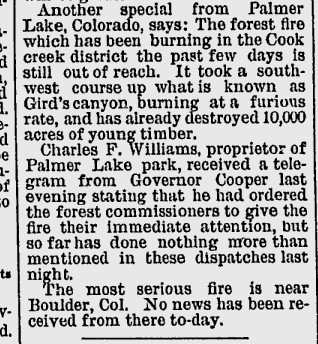I took this picture an hour ago from the top of the ridge behind the CSU football stadium. If you look closely, you can see a wisp of smoke. (Don’t worry – I rode my bicycle and didn’t contribute a lot of CO2.)
This mega-fire is about 2% the size of the 1890 fire, which burned from Santa Fe well up into Colorado along the Sangre de Cristo Mountains.
Experts also tell us that the Gila Wilderness fire currently burning in New Mexico is the largest in New Mexico’s history, despite the fact that the 1890 fire was much larger.







I am now to the point where I don’t believe a fricken thing that comes out of the media. In my view, our modern media has absolutely no credibility and for me, I doubt they ever will again.
Every backyard trash fire is immediately given the “worst ever” tag by the wonderful LSM.
It’s pretty hot and dry outside though.
The smoke wasn’t bad at all this morning, but it picked up a ton this afternoon. Ash was falling in my yard.
-Scott
Consider the 1881 Huron (Thumb) Fire in Michigan burned 1 million acres in a single day! The prairies once burned as much as 175 million acres annually.
The environmental movement fails to appreciate wildfires are an essential ecological element.
“The environmental movement fails to appreciate wildfires are an essential ecological element.”
I agree … see below:
“Although most people regard fire as a destructive force that should be fought and quickly extinguished, the fact is the boreal forest evolved in the presence of fire and adapted to it. Forrest Hall says it’s not a question of if a given region of the boreal forest will burn, it’s a question of when. Hall, a physicist at NASA’s Goddard Space Flight Center, explains that wildfire is an integral part of the boreal ecosystem. Indeed, the high northern latitude forests would be quite different were it not for frequent fires (Hall 1999).”
“”Fire is the mechanism by which the forest is continually regenerated,” states Hall. Fires consume dead, decaying vegetation accumulating on the forest floor, thereby clearing the way for new growth. Some species, such as the jack pine, even rely on fire to spread their seeds. The jack pine produces “seratonous” (resin-filled) cones that are very durable. The cones remain dormant until a fire occurs and melts the resin. Then the cones pop open and the seeds fall or blow out. ”
http://earthobservatory.nasa.gov/Features/BOREASFire/